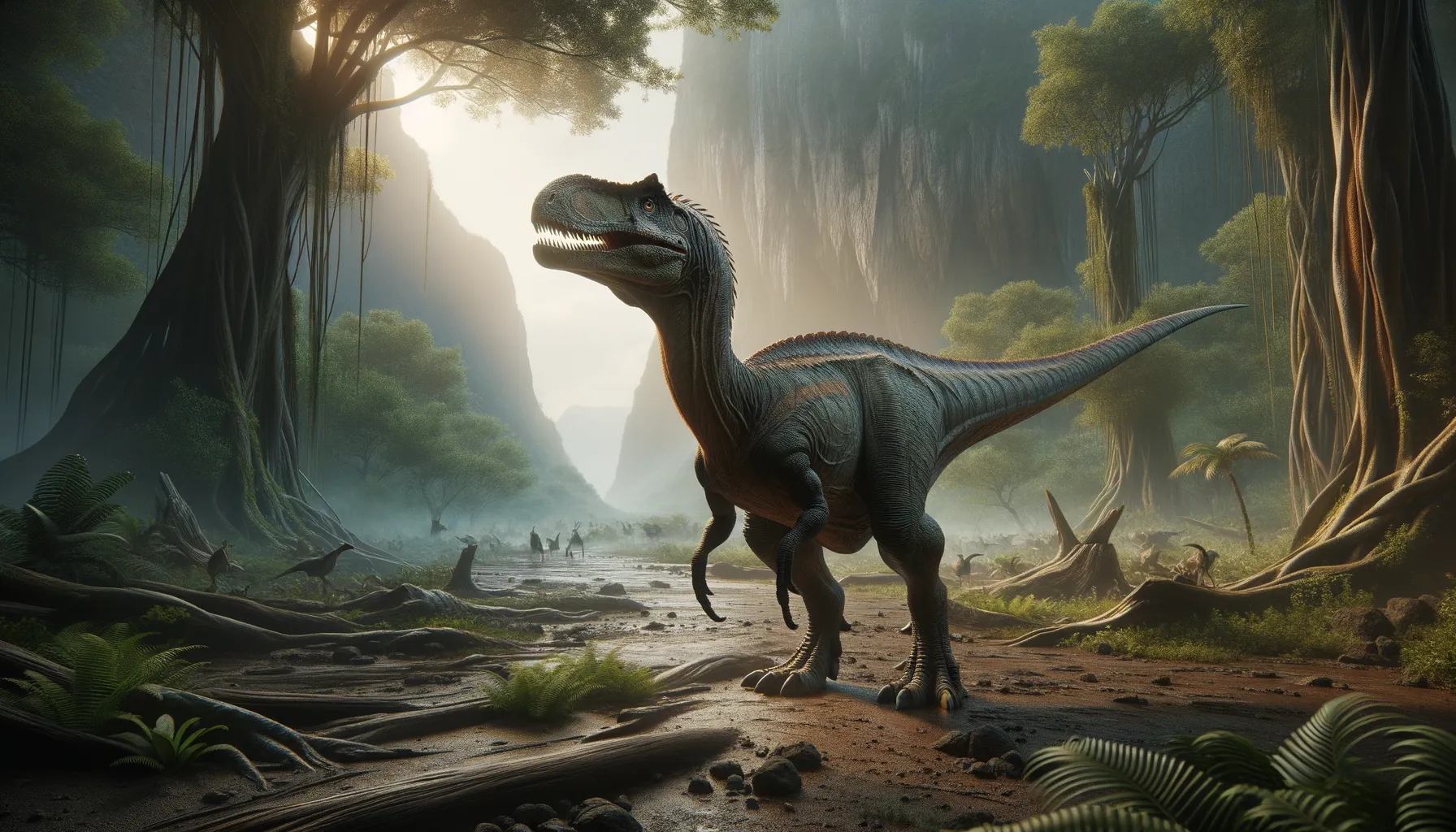
Zhanghenglong
Unveiling ancient Asian dino secrets.
Period
Cretaceous
Length
Estimated at about 9 meters long.
Height
Approximately 3 meters tall.
Weight
Estimated around 2,500 kilograms.
Zhanghenglong, a mid-sized hadrosauroid dinosaur, roamed the Earth during the Late Cretaceous period. First discovered in the eastern regions of modern-day China, its discovery has provided key insights into the evolution of plant-eating dinosaurs in Asia. With its distinctive duckbilled appearance, Zhanghenglong sheds light on the transition between early and advanced hadrosauroids, linking dinosaur lineages across continents.
Diet
Zhanghenglong was a herbivore, feeding primarily on a variety of vegetation. Its diet likely included leaves, seeds, and possibly aquatic plants, reflecting the dense plant life available in its habitat.
Hunting
As a herbivore, Zhanghenglong did not hunt but foraged for plants. Its beak-like mouth helped it strip leaves from plants, while its molars ground them efficiently.
Environmental challenges
Zhanghenglong lived in a period with dynamic environmental changes, which may have included fluctuations in climate and vegetation. The shifting landscapes could pose challenges in finding consistent food sources. Additionally, they needed to adapt to potential predators, requiring constant vigilance and likely group protection strategies.
Speed
Likely moderate, similar to other hadrosauroids.
Lifespan
Estimated at 10 to 20 years.
First discovery
Discovered in China in 2014.
Fun Facts
- Zhanghenglong was a plant-eating dinosaur that lived during the Late Cretaceous period around 90 million years ago.
- This dinosaur was named after Zhang Heng, an ancient Chinese polymath known for his work in mathematics, astronomy, and engineering.
- Zhanghenglong belonged to a group of dinosaurs called hadrosauroids, which are commonly known as duck-billed dinosaurs.
- Fossils of Zhanghenglong have been discovered in the Henan Province of China, providing insights into the diversity of dinosaurs in that region.
- Unlike its later relatives with more complex dental structures, Zhanghenglong had simpler teeth, reflecting its earlier position in the hadrosaur lineage.
- Zhanghenglong's discovery has helped paleontologists understand the evolutionary transition from early hadrosauroids to more advanced hadrosaurs.
- Although not as famous as some other dinosaurs, Zhanghenglong adds important pieces to the puzzle of dinosaur evolution.
Growth and Development
Zhanghenglong likely experienced rapid early growth, a characteristic seen in many dinosaurs to avoid predation at smaller sizes. As it matured, its growth rate may have slowed, with full size reached within a few years. This development pattern would have been vital for reaching reproductive maturity timely.
Habitat
The habitat of Zhanghenglong was predominantly warm and semi-tropical with abundant plant life, including forests and swampy areas. Plenty of waterways provided the moisture necessary for diverse vegetation growth, critical for its herbivorous diet. The landscape was likely varied, with flat plains offering ample grazing opportunities.
Interaction with other species
Zhanghenglong likely interacted with a variety of dinosaur species, both herbivores, and carnivores. Herbivorous peers may have competed for similar food resources, while carnivores represented constant threats. These interspecies dynamics would shape its behavior, encouraging herd vigilance, and potentially influencing migratory patterns for resource optimization.
Natural lifespan
Its natural lifespan might range from 10 to 20 years.
Reproduction
Reproduction likely involved laying clutches of eggs, similar to other dinosaurs. Nests were probably constructed in secure areas, possibly guarded by adult individuals. Hatchlings would require care, remaining close to protective adults until they were independent enough to join the herd.
Social behaviour
Zhanghenglong probably exhibited social behavior, forming herds for protection against predators. Family groups would promote survival, offering safety in numbers. Within these herds, interactions would include communication through sounds or visual signals, maintaining group cohesion.
Fossil locations
Fossils of Zhanghenglong were primarily found in China, particularly in areas indicating rich prehistoric ecosystems. The discovery sites suggest they were widely distributed in regions that offered plentiful resources. Uncovering such fossils helps piece together the vast continental ecosystems of the Cretaceous period.
